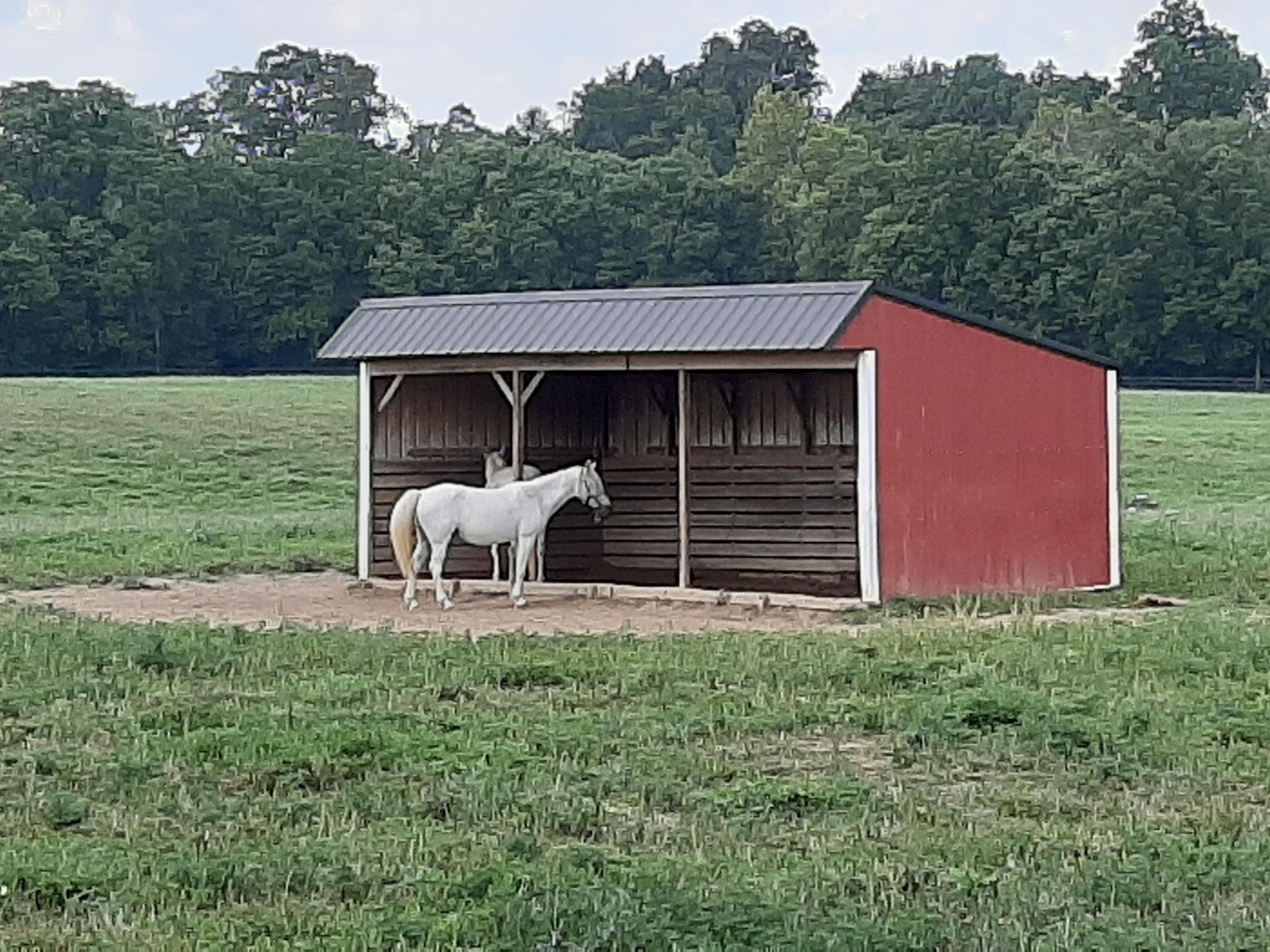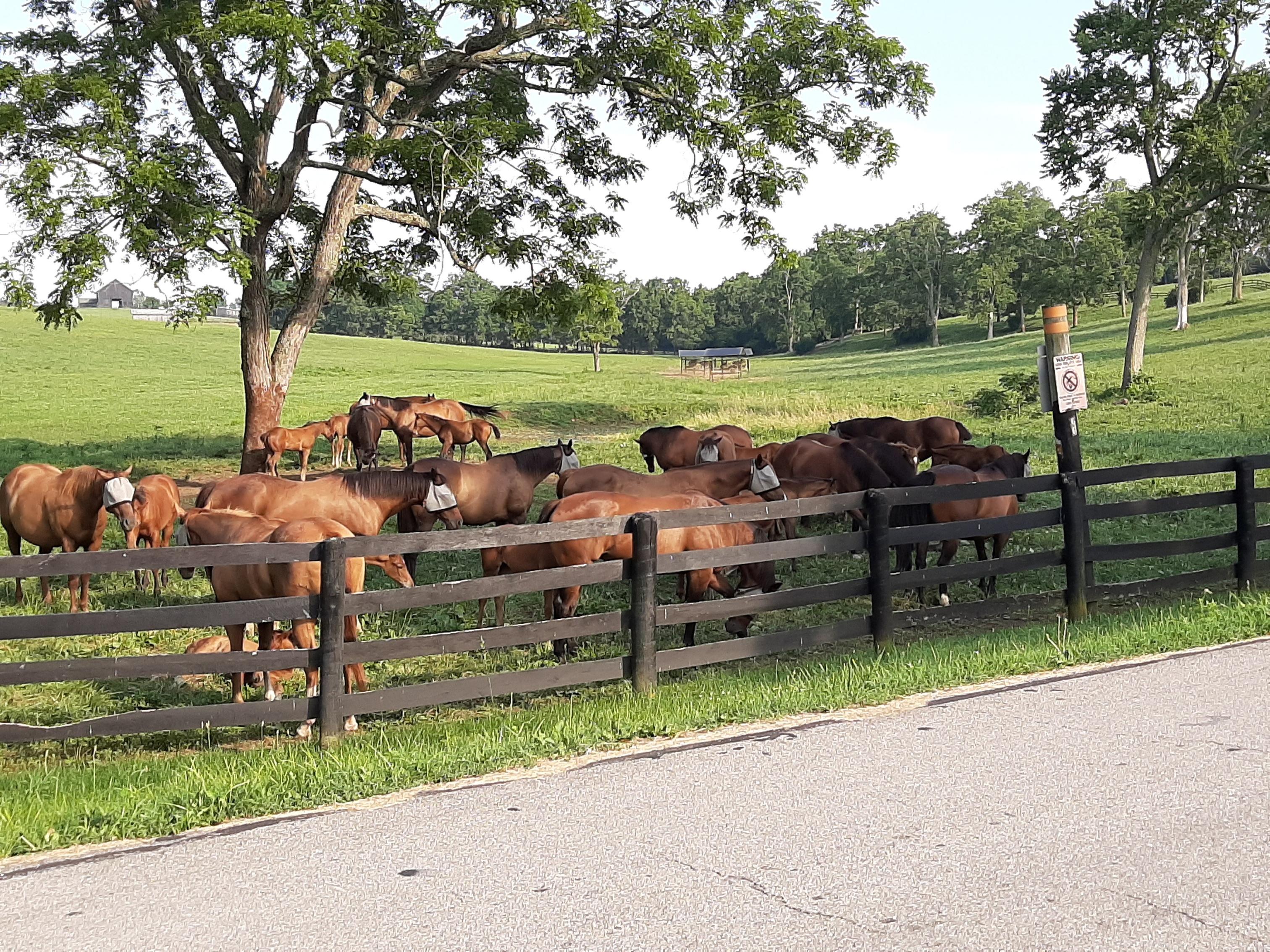Undergrad Research Project Studies Horses’ Inclination to Seek Shade at Certain Temps and Times of Day in Central Kentucky
In the last Equine Science Review, an undergraduate independent research project that examined shade seeking behavior in Texas was discussed. A similar study was done in Central Kentucky by Kassie Rutherford, an undergraduate equine junior at the University of Kentucky. Rutherford completed an independent research project observing horses in Midway, Kentucky. She also worked with Camie Heleski, PhD, senior lecturer within the equine undergraduate degree program, on a quest to learn more about horses’ desire to seek shade during different times of the day.

Rutherford conducted this research primarily at Heronwood Farm and surrounding facilities because of their wide array of breeds, ages and disciplines.
“Right now I’m still on my horse, and I’m looking at two horses that belong to a racehorse trainer, two other horses that belong to the owner and I’m looking at a different property with mares and foals. That’s what was so great about where I was at, because I could collect information while I rode,” Rutherford said.
“I loved how Kassie incorporated her data collection into moving around the farm, sometimes exercising her horses simultaneously,” Heleski said. “She was really diligent about entering the data into her cell phone so she could do both.”
During her project, Rutherford observed at what point of the day was it hot enough for horses to seek out shade. This was to establish if there were temperature or time of day patterns. Like Underwood in the Texas study, Rutherford was interested in seeing if the horses would seek shade in temperatures greater than 85 degrees Fahrenheit.
“Some of it was a pattern, but I think it had a lot to do with where the sun was, what the actual UV-Index was and if there were clouds covering the sun. Because even in the morning when it was full sun, they were almost never in the shelter,” Rutherford said.
When asked about her findings, she said that she believed it wasn’t necessarily due to the positioning of the sun in the sky, but more so the hottest point of the day.
“What I found was that it wasn’t where the sun was the highest in the sky, it was actually the hottest part of the day, which is typically, from what I found, between 3 to 6 p.m. It was between those times that the horses started to seek out shelter,” Rutherford said.
“This echoes my casual observations over the summer,” Heleski said. “Kassie seemed to see that sometimes it also had a lot to do with the group dynamics of the herd on a per pasture basis; sometimes it seemed that the heat was eliciting shade seeking behavior in one pasture, but just one pasture over, it might be that none of the horses were seeking shade.”
Rutherford was also interested in learning if there was a preference in types of shade. For example, if horses would seek out manmade shelter versus trees, and what the difference between those might be.
“I would walk out to my horses’ field and I would stand in the shelter with a thermometer, and there were several days that it was 8-10 degrees hotter within the shelter, even though it was shady. So then, they would rather stand under tree shade because of the breeze and the fresh air that they got that was inhibited by the shelter,” Rutherford said.
“I do feel this is a very important point; some people who build sheds for their horses get frustrated that the horses don’t seem to use the shade much in the summer. But, unless we know the actual temperature inside the shelter, it’s hard to say the horses aren’t using common sense by avoiding the shelter during peak heat times,” Heleski said.

When asked about Underwood’s findings about the horses seeking shade due to the UV index, Rutherford agreed that it could be a possible explanation, but that it wasn’t something she directly measured.
“You know how there’s days where it’s bright outside, but it might not actually be full sun? It could be that those are the days that the UV index is a little bit lower. I would agree with her that the UV index plays a role if they want to be in the shelter or not,” Rutherford said.
Rutherford said her experience with undergraduate research has strongly impacted her life and future decisions.
“I definitely found myself outside of my research looking at farms and how their horses were responding to the heat, if they were seeking out shade,” she said. “One of the things that I’ve found with this degree, is that even if I don’t get a career in the equine industry, everything I learned, I can apply to my own life as a horse owner. This research has already helped me to decide what kind of shelter I want to have for my horses on my own property.”
She said that the level of responsibility that is given to students in undergraduate research is extremely important.
“First of all, you’re accountable for something that’s more than just homework. It’s under your prerogative to find that research, find the horses that you are looking for and do it. It just gives a certain level of responsibility to undergrads doing this research, so I think it’s really good. It’s good to have a project that you don’t have a lot of guidance on, it’s up to you how you conduct it,” Rutherford said.
Sabrina Jacobs, a senior majoring in equine science and management and minoring in wildlife biology and management, is a communications and student relations intern with UK Ag Equine Programs.
